I'm trying to achieve this design in iOS UIKit:
Using bezier path I have completed it but I am unable to achieve the inverted curve from the left side.
I'm attaching the code snippet that I use:
class ArcView : UIView {
override init(frame: CGRect) {
super.init(frame: frame)
}
required init?(coder: NSCoder) {
super.init(coder: coder)
}
func setupViewWith(textToDisplay:String,imageNamed:String,backgroundColor:UIColor){
setupView(backgroundColor: backgroundColor)
}
func setupView(backgroundColor:UIColor){
let criclepath : UIBezierPath = getCirclePath()
let shapeLayer = CAShapeLayer()
shapeLayer.position = CGPoint(x: 0, y: 0)
shapeLayer.path = criclepath.cgPath
shapeLayer.lineWidth = 1.5
shapeLayer.strokeColor = UIColor.white.cgColor
shapeLayer.fillColor = backgroundColor.cgColor
self.layer.addSublayer(shapeLayer)
let supportpath : UIBezierPath = getPath()
let supportLayer = CAShapeLayer()
supportLayer.path = supportpath.cgPath
supportLayer.lineWidth = 1.5
supportLayer.strokeColor = UIColor.white.cgColor
supportLayer.fillColor = backgroundColor.cgColor
self.layer.addSublayer(supportLayer)
}
func getPath()->UIBezierPath{
let height = self.frame.size.height
let width = self.frame.size.width
let halfHeight = height/2.0
let xPosition = 40.0
let path = UIBezierPath()
path.move(to: CGPoint(x: xPosition, y: 0))
path.addLine(to: CGPoint(x: width-halfHeight, y: 0))
path.addArc(withCenter: CGPoint(x: width-halfHeight, y: halfHeight),
radius: halfHeight,
startAngle: CGFloat(270).toRadians(),
endAngle: CGFloat(90).toRadians(),
clockwise: true)
path.addLine(to: CGPoint(x: xPosition, y: height))
path.addCurve(to: CGPoint(x: xPosition, y: 0),
controlPoint1: CGPoint(x: xPosition+25 , y: 30),
controlPoint2: CGPoint(x: xPosition+10, y: 5))
path.close()
return path
}
func getCirclePath()->UIBezierPath{
let path = UIBezierPath(ovalIn: CGRect(x: 0,
y: 0,
width: self.frame.size.height,
height: self.frame.size.height))
path.close()
return path
}
}
extension CGFloat {
func toRadians() -> CGFloat {
return self * CGFloat(Double.pi) / 180.0
}
}
I'm using two shape layers, one for the circle in the left side and one for the arcShape in the right side.
My result using the above snippet:


